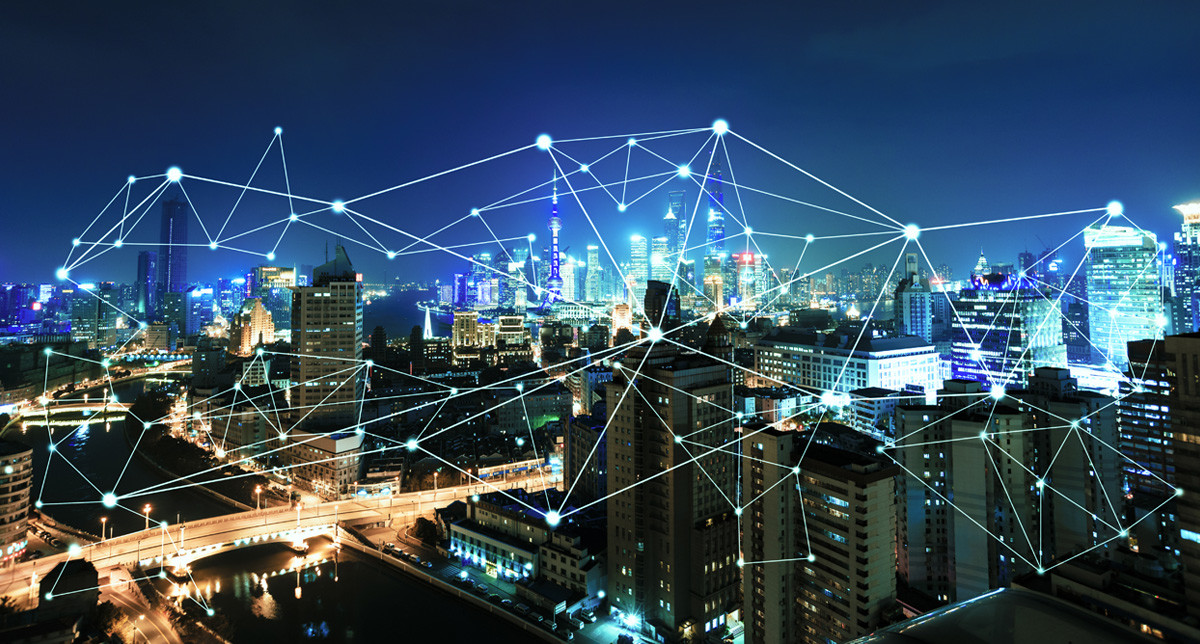Understanding the Role of IoT Services in Smart Cities
The rise of smart cities represents a paradigm shift in urban development, where technological innovations like Internet of Things (IoT) services play an important role in redefining the urban landscape. This in-depth exploration aims to break apart the multifaceted role of IoT services in smart cities, exploring the complexities of IoT development services and IoT app development services. From the evolution of smart cities to the challenges and prospects, this comprehensive analysis aims to provide a deeper understanding of how IoT services are shaping the cities of tomorrow.
Table of Contents
Evolution of Smart Cities: A Technological Revolution
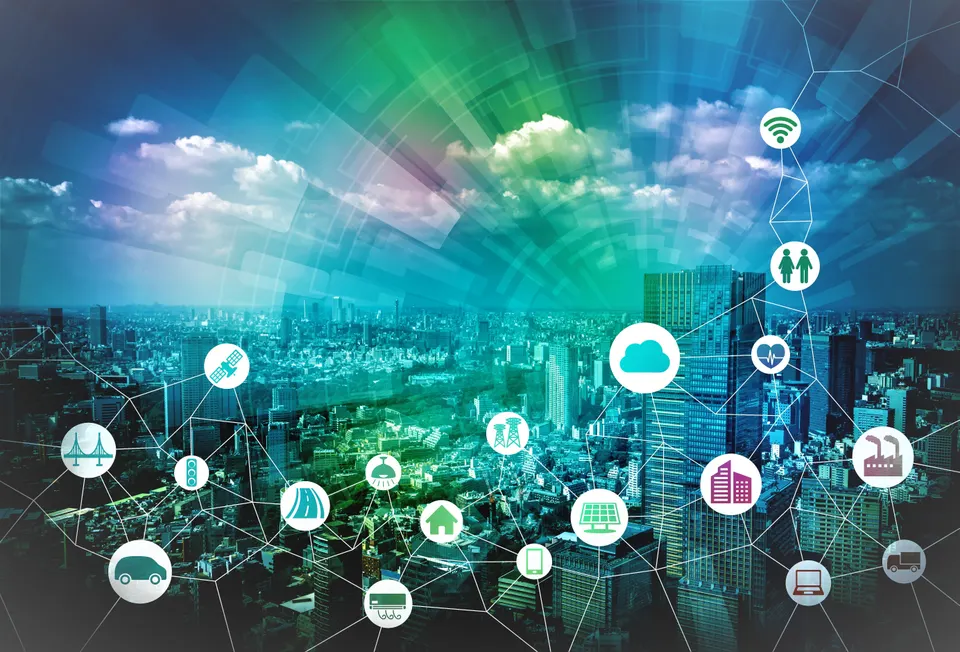
The concept of smart cities has evolved in response to the challenges posed by rapid urbanization, population growth, and resource constraints. Traditional city management approaches often struggle to keep pace with the demands of modern urban living, leading to inefficiencies in infrastructure, transportation, and service delivery. However, the advent of IoT services has ushered in a new era of urban innovation, offering unprecedented opportunities to enhance efficiency, sustainability, and quality of life.
Historically, cities have relied on centralized systems and manual processes to manage essential services such as transportation, energy, water, and waste management. However, these traditional approaches are increasingly being augmented by IoT-enabled solutions that utilize interconnected sensors, devices, and networks to collect and analyze real-time data. This data-driven approach allows cities to gain valuable insights into urban dynamics, enabling informed decision-making and proactive management of resources.
Key Components of IoT Services: Building Blocks of Smart Cities
At the core of IoT services are a different set of technologies and applications designed to address the unique challenges faced by urban environments. These include:
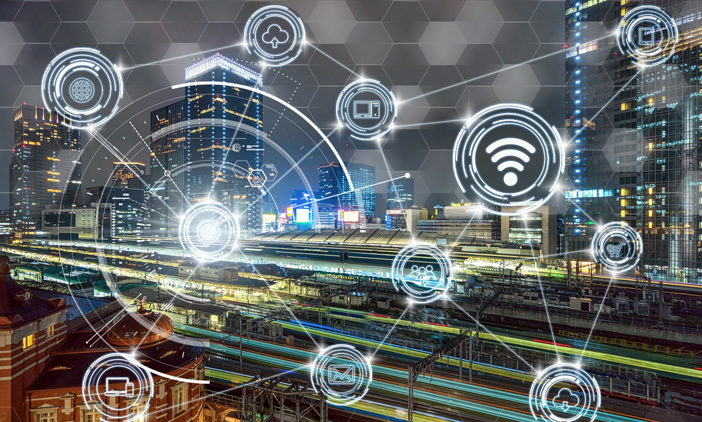
Sensor Networks:
IoT devices equipped with sensors play a crucial role in collecting data on various aspects of city life, including air quality, traffic flow, temperature, and humidity. These sensors can be deployed across the cityscape, providing a comprehensive view of urban dynamics and enabling authorities to monitor and manage key parameters in real time.
Cloud Computing:
The large amount of data IoT devices generate requires robust storage and processing capabilities. Cloud computing provides scalable and cost-effective solutions for storing and analyzing data, allowing cities to leverage powerful analytics tools to collect actionable insights.
Connectivity:
Reliable connectivity is essential for enabling seamless communication between IoT devices and centralized systems. Technologies such as 5G, Wi-Fi, and LPWAN (Low-Power Wide-Area Network) play a crucial role in providing complete connectivity, enabling real-time data transmission and remote management of IoT devices.
Data Analytics:
The true value of IoT services lies in the ability to receive actionable insights from the huge amounts of data generated by sensors and devices. Data analytics techniques, including machine learning and predictive analytics, enable cities to identify trends, patterns, and anomalies in urban data, facilitating informed decision-making and proactive intervention.
IoT Development Services:
To harness the full potential of IoT technologies, cities require specialized expertise in designing, developing, and deploying IoT solutions. IoT development services include a range of capabilities, including hardware design, software development, system integration, and deployment support. These services help cities navigate the complexities of IoT implementation, ensuring seamless integration with existing infrastructure and systems.
IoT App Development Services:
User-friendly interfaces and intuitive mobile applications are essential for enabling citizen engagement and participation in smart city initiatives. IoT app development services focus on designing and developing mobile applications that provide access to real-time information, services, and interactive features. These applications empower citizens to actively contribute to urban governance, report issues, and access essential services.
Enhancing Urban Mobility: The Smart Transportation Revolution
One of the most significant impacts of IoT services in smart cities is in the area of urban mobility. Transportation systems are a lifeline of cities, facilitating the movement of people and goods and driving economic growth. However, traditional transportation systems often suffer from congestion, inefficiency, and environmental pollution, leading to significant challenges for urban residents and policymakers alike.
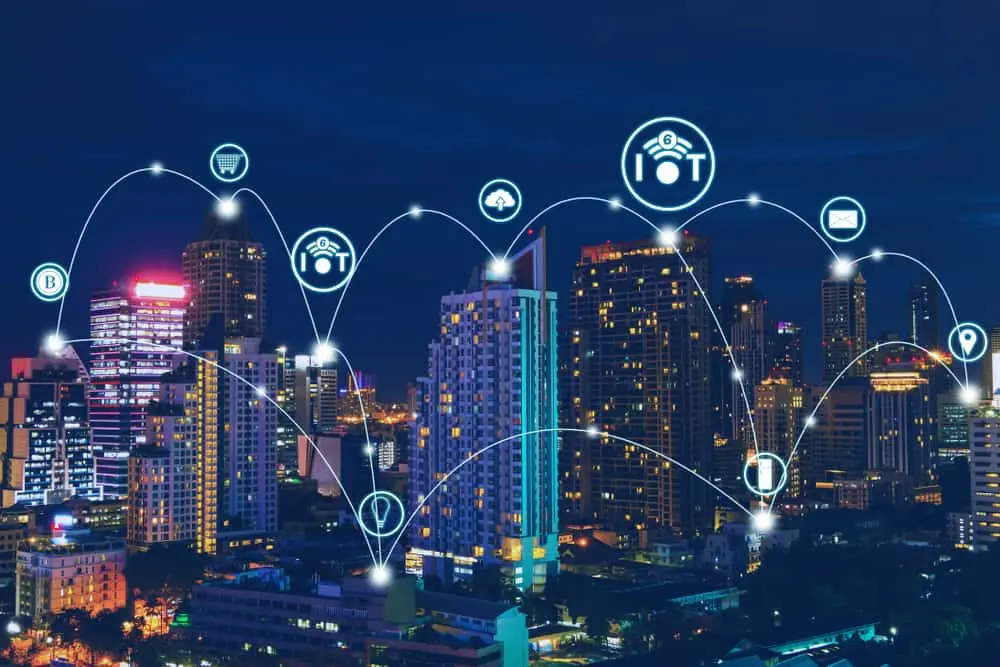
IoT-enabled transportation systems offer a transformative solution to these challenges by providing real-time insights into traffic flow, public transit usage, and infrastructure conditions. Smart traffic management systems utilize IoT sensors and data analytics to optimize traffic signals, manage congestion, and improve the overall efficiency of road networks. Dynamic routing algorithms enable real-time adjustments to traffic patterns, keeping vehicles away from congested areas and minimizing travel times.
Public travel systems are also undergoing a digital transformation with the integration of IoT technologies. IoT-equipped buses, trains, and stations provide passengers with real-time information on arrival times, service disruptions, and route options, enhancing the overall passenger experience. Integrated fare payment systems enable seamless multimodal transportation, allowing passengers to pay for rides using a single account or mobile application.
In addition to improving the efficiency of traditional transportation modes, IoT services are driving innovation in emerging mobility solutions such as ridesharing, e-bikes, and autonomous vehicles. IoT-enabled ridesharing platforms optimize matching algorithms based on real-time demand and supply data, reducing wait times and increasing vehicle utilization rates. e-bike services, including electric scooters and bicycles, utilize IoT sensors for fleet management, location tracking, and maintenance schedule, ensuring optimal availability and performance.
Sustainable Resource Management: Towards Greener Cities
In addition to transforming urban mobility, IoT services are driving sustainable resource management initiatives in smart cities. Environmental sustainability is a critical priority for cities worldwide, as they seek to decrease the impacts of climate change, reduce carbon emissions, and conserve natural resources. IoT technologies offer innovative solutions for monitoring, managing, and optimizing resource usage across various domains, including energy, water, waste, and environmental quality.
Energy management is a key focus area for IoT-enabled sustainability initiatives, as cities seek to reduce their carbon footprint and transition towards renewable energy sources. Smart grid technologies utilize IoT sensors, meters, and controls to monitor electricity consumption in real-time, optimize distribution networks, and integrate distributed energy sources such as solar panels and wind turbines. Demand response programs enable dynamic pricing and load balancing, satisfying consumers to shift energy usage to off-peak hours and reduce overall consumption.
Water management is another critical aspect of sustainable urban development, particularly in regions facing water Lack of availability and drought conditions. IoT-enabled water monitoring systems track water quality, consumption, and distribution patterns, enabling cities to detect leaks, identify inefficiencies, and optimize usage. Smart irrigation systems leverage weather data and soil moisture sensors to optimize watering schedules, reducing water waste and promoting landscape sustainability.
Waste management represents a significant challenge for cities grappling with increasing urbanization and population growth. Traditional waste collection methods often suffer from inefficiencies, leading to overflowing bins, littering, and environmental pollution. IoT-enabled waste management systems offer a more efficient and sustainable approach by deploying smart boxes equipped with sensors and actuators. These bins automatically detect fill levels, schedule pickups, and optimize collection routes, reducing operational costs and minimizing environmental impact.
Enhancing Public Safety and Security: Building Resilient Cities
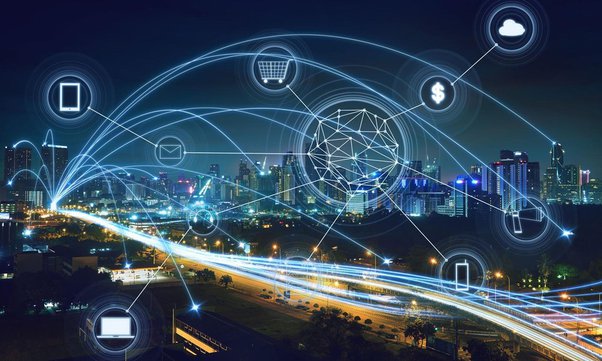
Public safety and security are fundamental priorities for cities, as they strive to protect residents, businesses, and critical infrastructure from various threats and emergencies. IoT services offer solutions for enhancing situational awareness, improving emergency response times, and reducing risks in urban environments. From smart surveillance systems to IoT-enabled emergency services, cities are leveraging technology to build more resilient and secure communities.
Video surveillance systems are a cornerstone of urban security initiatives, providing round-the-clock monitoring of public spaces, transportation hubs, and critical infrastructure. IoT-enabled surveillance cameras equipped with high-definition video sensors and advanced analytics capabilities enable real-time threat detection, anomaly identification, and suspicious behavior analysis. Facial recognition algorithms enhance law enforcement efforts by enabling the identification and tracking of individuals across different locations and incidents.
In addition to traditional surveillance methods, cities are exploring new approaches to public safety using IoT technologies. Smart street lighting systems integrate sensors and cameras to provide intelligent lighting solutions that adapt to environmental conditions and casual activity. These systems enhance visibility, deter crime, and improve safety in public areas such as parks, streets, and parking lots. Emergency call boxes equipped with IoT sensors enable citizens to summon help quickly in case of emergencies, providing a lifeline for those in difficulty.
IoT services also play a crucial role in failure readiness and response, enabling cities to decrease the impacts of natural failures, such as earthquakes, floods, and cyclones. Early warning systems utilize IoT sensors, satellite imagery, and predictive models to detect and monitor potential hazards, issuing timely alerts to residents and emergency responders. IoT-enabled drones and unmanned aerial vehicles (UAVs) provide rapid assessment and inspection capabilities, surveying disaster-affected areas and delivering critical supplies to remote locations.
Improving Healthcare Accessibility: Towards Inclusive Cities
Access to quality healthcare is a fundamental human right, yet millions worldwide lack sufficient access to essential medical services, particularly in underserved urban areas. IoT services offer innovative solutions for addressing healthcare differences, improving access to care, and enhancing health outcomes in smart cities. From remote patient monitoring to telemedicine, cities are utilizing technology to bridge the gap between patients and healthcare providers.
Remote patient monitoring (RPM) is a key application of IoT services in healthcare, enabling healthcare providers to monitor patients’ vital signs, suggestions, and treatment reliability remotely. IoT-enabled medical devices, such as wearable sensors, smartwatches, and connected health monitors, collect real-time data on patients’ health status and transmit it securely to healthcare professionals. RPM systems empower patients to manage chronic conditions, such as diabetes, hypertension, and heart disease, from the comfort of their homes, reducing the need for frequent hospital visits and improving overall quality of life.
Telemedicine platforms provide virtual consultations and remote medical services to patients, regardless of their location or mobility limitations. IoT-enabled telehealth solutions leverage video conferencing, messaging, and data-sharing technologies to facilitate real-time communication between patients and healthcare providers. These platforms offer a convenient and cost-effective alternative to traditional in-person consultations, particularly for non-emergency medical issues, follow-up appointments, and preventive care services.
IoT services also support population health management initiatives to improve public health outcomes and reduce healthcare differences in urban communities. Health information systems integrate data from various sources, including electronic health records, IoT devices, and public health databases, to identify trends, patterns, and risk factors affecting population health. Predictive analytics algorithms enable proactive interventions, such as targeted screening programs, health education campaigns, and community outreach efforts, to address common health issues and minimize diseases.
Challenges and Considerations: Navigating the Road Ahead
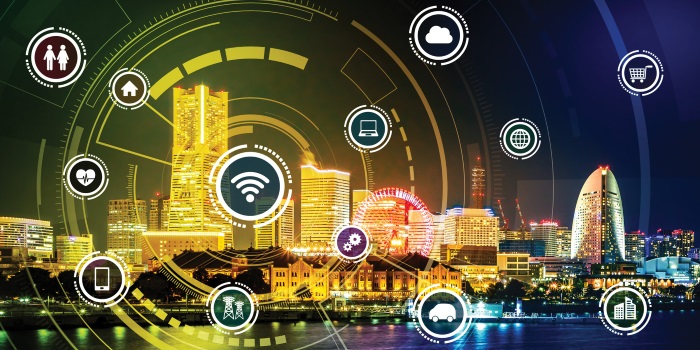
While the potential benefits of IoT services in smart cities are massive, their widespread adoption also has several challenges and considerations that must be addressed to realize their full potential. Chief among these are:
Data Privacy and Security:
The addition of IoT devices and sensors generates large amounts of data, raising concerns about data privacy, security, and confidentiality. Cities must implement powerful data governance frameworks, encryption protocols, and access controls to protect sensitive information from unauthorized access, breaches, and cyberattacks.
Integration and Standards:
The diverse ecosystem of IoT devices, platforms, and protocols often lacks integration, limiting seamless integration and scalability. Cities must establish common standards and integration frameworks to ensure compatibility and integration between different IoT solutions, enabling data sharing and collaboration across stakeholders.
Digital Inclusion and Equity:
The benefits of IoT services in smart cities must be accessible to all residents, regardless of their economic status, education level, or digital literacy skills. Cities must prioritize digital inclusion initiatives, such as affordable internet access, digital skills training, and community promotion programs, to ensure reasonable access to technology and services for excluded populations.
Sustainability and Resilience:
The rapid deployment of IoT devices and infrastructure raises concerns about their environmental impact, energy consumption, and electronic waste generation. Cities must adopt sustainable design principles, energy-efficient technologies, and circular economy models to minimize the environmental footprint of IoT deployments and promote long-term sustainability.
Ethical and Regulatory Considerations:
IoT technologies in smart cities raise ethical and regulatory questions related to surveillance, data ownership, and algorithmic bias. Cities must follow ethical principles, legal frameworks, and privacy regulations to ensure responsible and ethical use of IoT data and technologies, protecting the rights and interests of citizens.
Future Directions: Charting the Path Forward
Looking ahead, the role of IoT services in smart cities is poised to expand further, driven by technological advancements, policy initiatives, and citizen demand for sustainable and inclusive urban solutions. Several emerging trends are likely to shape the future of IoT-enabled smart cities:
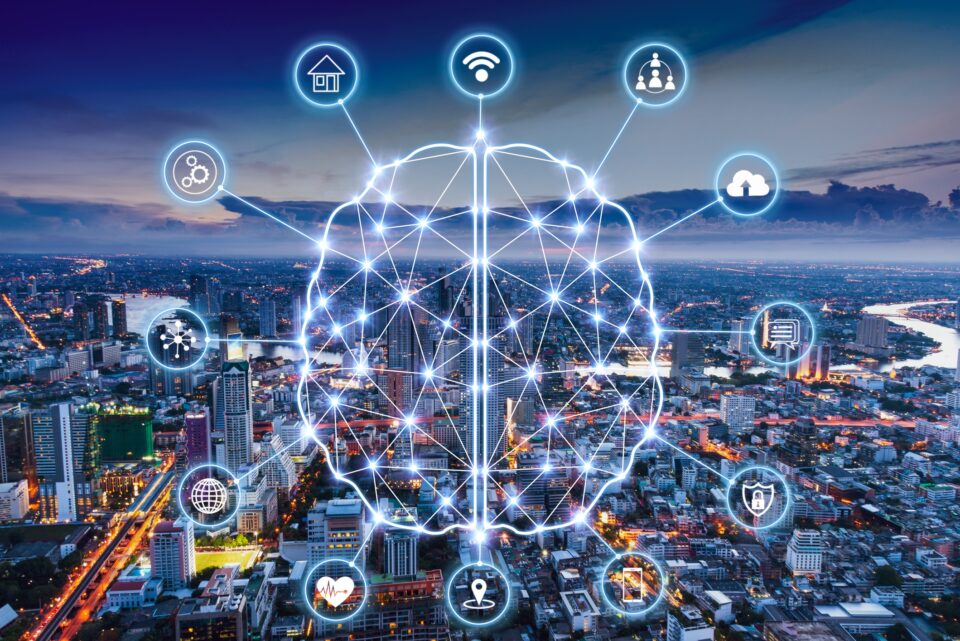
Edge Computing:
The addition of IoT devices and sensors at the network edge is driving the adoption of edge computing technologies, enabling real-time data processing, low-latency analytics, and distributed intelligence. Edge computing architectures enhance the scalability, reliability, and responsiveness of IoT applications, particularly in latency-sensitive use cases such as autonomous vehicles, industrial automation, and augmented reality.
5G Connectivity:
The rollout of 5G networks promises to unlock new opportunities for IoT innovation in smart cities, offering high-speed, low-latency connectivity for a wide range of applications. 5G technology enables real-time communication, massive device connectivity, and network slicing capabilities, facilitating the deployment of mission-critical IoT services, such as autonomous vehicles, remote surgery, and smart grids.
Artificial Intelligence:
Advances in artificial intelligence (AI) and machine learning are transforming how cities analyze, interpret, and act upon urban data. AI-powered algorithms enable predictive analytics, exception detection, and autonomous decision-making, empowering cities to anticipate and respond to emerging challenges in real-time. From optimizing transportation networks to predicting and reducing environmental risks, AI is key to unlocking new levels of efficiency and resolve in smart cities.
Digital Twins:
The concept of digital twins, virtual replicas of physical assets, infrastructure, and urban environments, is gaining traction in smart city planning and management. Digital twins enable cities to simulate, monitor, and optimize various aspects of urban life, from transportation systems and energy grids to buildings and public spaces. By creating digital twins of cities, policymakers can visualize complex urban dynamics, test different scenarios, and make data-driven decisions to enhance popularity and sustainability.
Citizen Engagement:
Citizen engagement and participation are essential for the success of smart city initiatives, as they ensure that technology solutions are aligned with the needs, preferences, and aspirations of urban residents. Cities are leveraging IoT technologies to foster greater transparency, accountability, and collaboration between governments, businesses, and citizens. From crowdsourced data collection to participatory budgeting platforms, IoT-enabled citizen engagement tools empower residents to contribute ideas, feedback, and solutions to shape the future of their communities.
Conclusion:
In conclusion, IoT services are revolutionizing the way cities are planned, built, and managed, offering innovative solutions to address the complex challenges of urbanization. From enhancing mobility and sustainability to promoting safety and inclusion, IoT technologies are transforming every aspect of urban life, creating smarter, more powerful, and inclusive cities for future generations. By harnessing the power of IoT development services and IoT app development services, cities can unlock new opportunities for innovation, collaboration, and citizen engagement, creating the way for a brighter and more successful future for urban communities worldwide.

